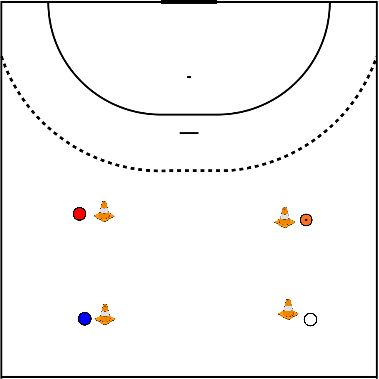Handball drills
- divide players among the pawns
- player 1 runs straight ahead but plays the ball off to the right collapsing player 2
- player 2 also runs straight ahead and plays the ball off to the right
- make it more difficult by playing 2 balls at the same time (start opposite each other)
- change direction during the exercise
- pass with a bounce
pay attention to timing start/finish
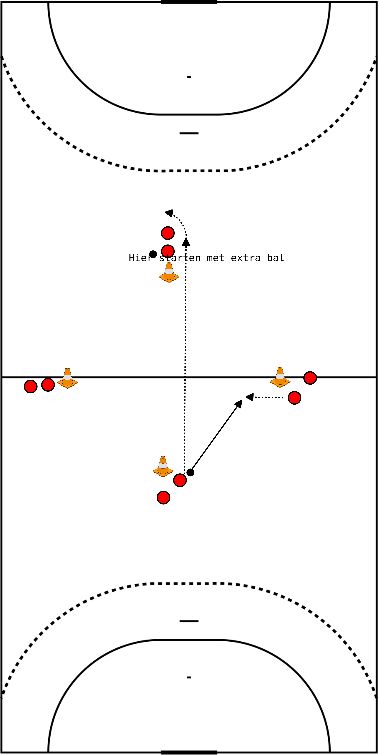
- Run in place, at whistle run across. Attention, immediately forward
- Run across, turn around at the whistle
With ball
- Tipping (right, left or alternately)
- At whistle hold ball, make 3 passes and continue tipping
- Roll ball, pick up, roll
- Blue throws the ball to the goalie and runs to the pylon.
- Keeper catches the ball and throws a break out on the running blue player.
- If goalkeeper cannot throw a break, throw ball to MA. This one throws BO.
- Blue takes the ball and tries to finish from the 9 yards.
- Optionally, put a defender around the 9 to defend.
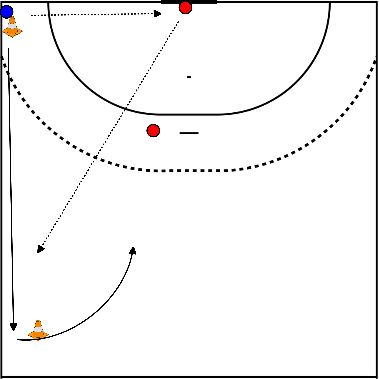
- Tjoek throwing - short arm.
- Rounding goal. Pawn in goal.
- Sprint back - turn off where to run past.
- Bench upside down - keep balance until it's your turn again
Attention on throwing with short arm and rounding stretch throw.
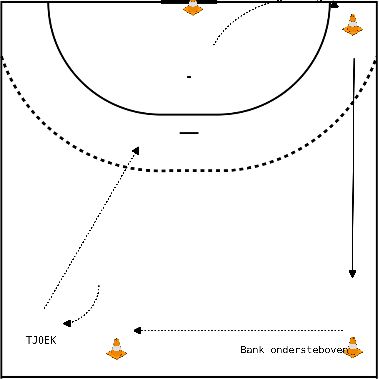
- In pairs facing each other.
- Defend by walking toward each other and:
- bringing hands to shoulder height
- tapping each other in the air with the hands - jumping
- touching each other in the air with the chest
- stopping each other with the hand in the side
Exercise 2:
- 3 defenders: left builder, left player, right builder.
- 2 attackers at each position.
- The ball leaves on the corner running in, passes to the Left builder.
- This Left builder passes pass to Center player.
- Defenders go out to attacker and shuffle back off to place.
- Attackers run backwards and may not stand still.
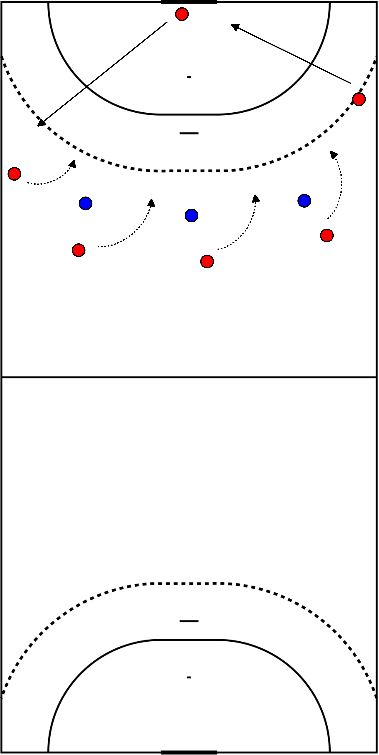
Relay
- Over the benches with 2 legs
- Backwards backwards
- Slide from pawn to pawn
- Backwards backwards
- Over the mats head roll
- Sprint to the finish line
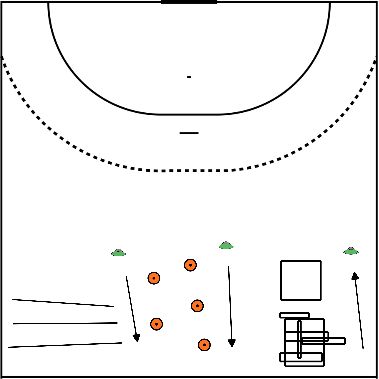
- Divide the group into two teams
- Team A on one side and Team B on the other side
- At the teams try to throw on the yoga ball
- If the yoga ball hits the bench of one team, the other team has won.
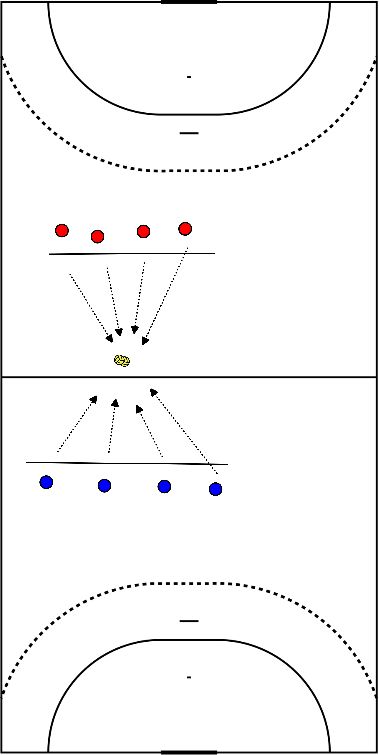
Useful for both goalkeepers and players.
- 2 posts at approximately 6 meters
- Left and right of each post 1 player
- 5th player stands in the middle
- Players at the posts play over with bounce, the center player tries to stop or touch the ball
- Pass giving from LO-M / RO-MO
- Pass giving in the run from LO to MO
- MO runs in without ball, feints back and gives pass to LO.
- LO feints towards the middle and throws on goal.
This exercise can also be done with 3 players.
- MO then runs in without ball and passes ball to L/RO.
- This exercise always in motion for the MO, run half circle, run backwards.
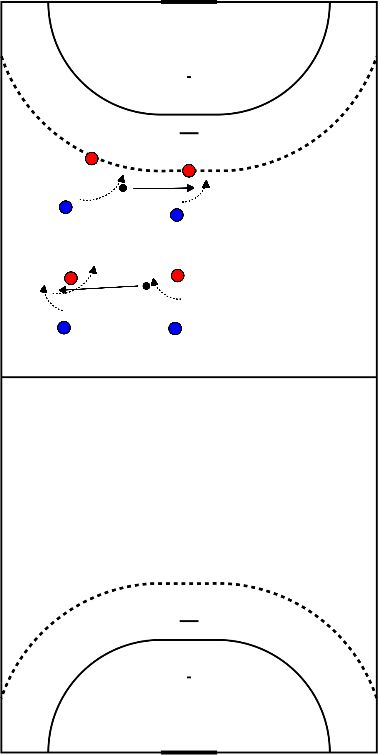
In two formations:
4-1
4-1
- 3 players blue form a triangle
- In the middle stands the circle player red
- 1 defender white
- Goal: the 3 players try to pass to the circle player and the defender tries to prevent this from happening
4-2
- Same formation as 4-1
- Extra defender added
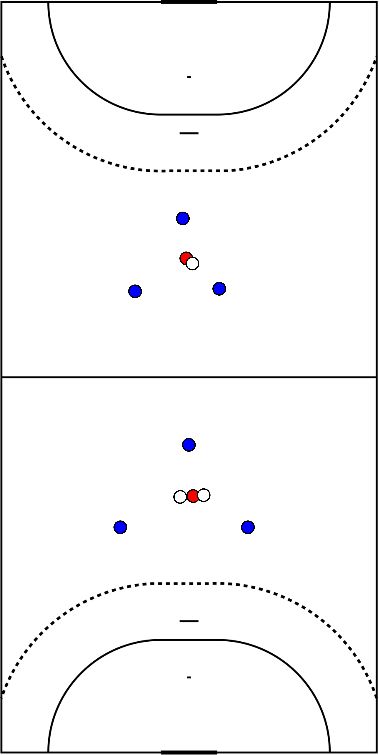
- 2 teams facing each other
- Bench with tops in between
- Knock off the tops
- Which team has the most?
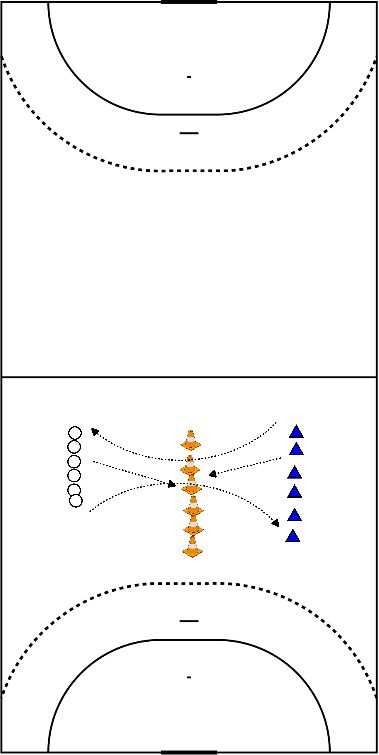
- At least 1 player stands at each pawn.
- There is 1 ball at red.
- Red throws to blue and walks to blue's pawn.
- Blue throws to white and runs to white's pawn and so on.
Variations:
- Running after the ball.
- Run the ball clockwise and players counterclockwise.
- Crossing diagonally.
- 2 balls.
- With a bounce.
